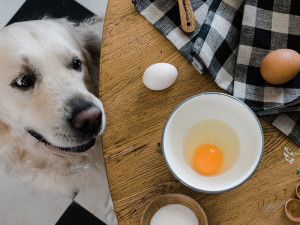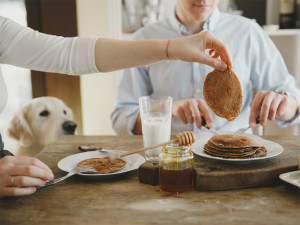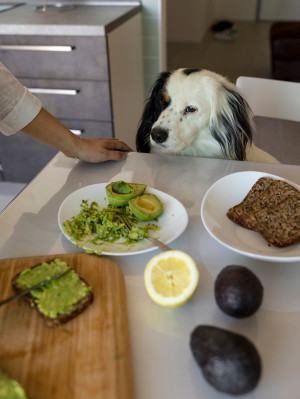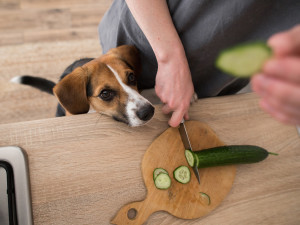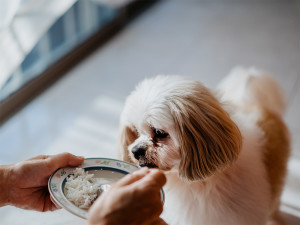How Many Treats Is Too Many?
The key to curbing mindless snacking – according to a veterinarian
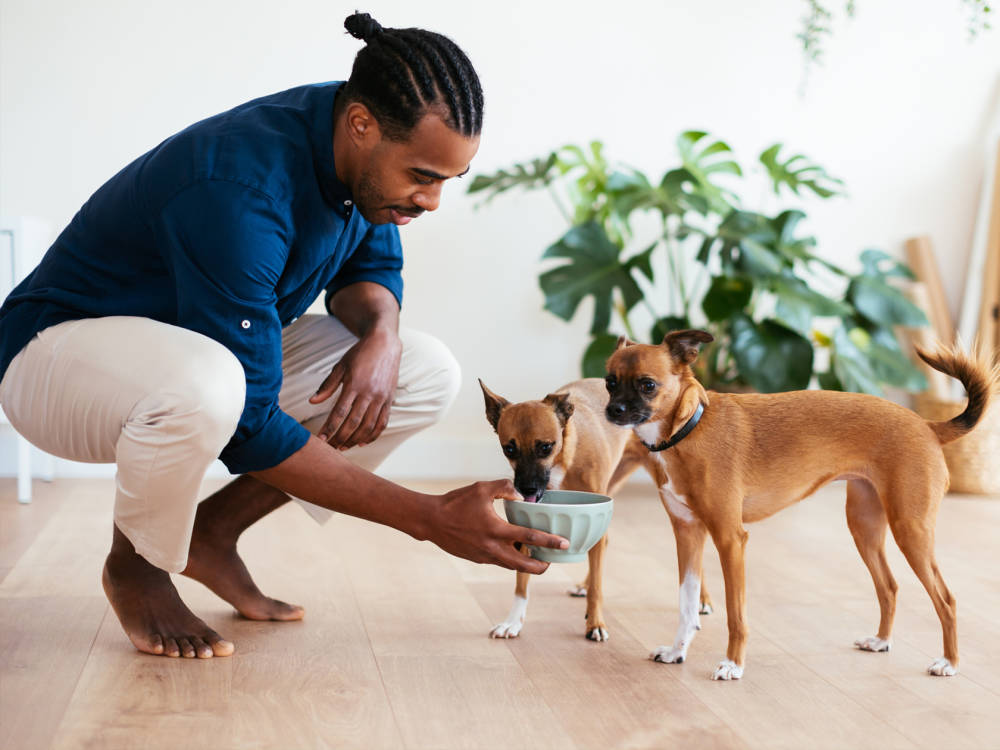
Share Article
Most dogs’ stomachs are bottomless pits and feeling full doesn’t seem to register. That means it’s up to you to control how much food and how many dog treats per day, which isn’t easy when your bleeding heart is up against those puppy dog eyes.
The ‘suggested feeding’ instructions on dog food labels can keep you on target when it comes to meals, but regulating snacks isn’t so simple. Reading labels and choosing ones touted as ‘fresh’, ‘all-natural’ and ‘artificial free’ is a good start. We asked a vet for more tips on how to get your treat game in check.

littleKin™ is Kinship’s home just for puppy and kitten parents. Bop over to check out expert advice, new pet tools, and special deals—all curated for your newest family member.
opens in a new tabHow many treats per day for a dog?
The bulk of your dog’s calories should come from their regular food, which is designed to meet their nutritional needs. Dog treats should only be used as rewards for good behaviour and make up no more than 10 percent of your dog’s daily calories. So, for example, if you have a small dog that needs 400 calories a day and the treats you give them are 20 calories each then they can have two of them per day. GCSE maths might come in useful after all.
As you can see, the key to this equation is knowing a) how many calories your dog should eat, and b) how many calories are in the treats you choose to give. Information found on your dog food label, along with a conversation with your vet, will guide you to that number. Any commercially prepared dog treats will list the calories-per-treat on the package.
What about dog training treats?
Dr Elizabeth Shines, DVM, breaks it down: “Generally speaking, dogs that are at a healthy weight for their breed can have two to four appropriately-sized treats per day.” If you’re a new pet parent, you’re probably thinking, by my calculation, it will take an eternity for my puppy to learn how to sit! Indeed, you’re bound to go through far more dog training treats in the first year of your pup’s life.
“Treats designed for dog training are usually given in greater quantities, so they tend to be very small and low in calories,” says Dr Shines. “Unless you’re doing multiple training sessions per day, those treats are unlikely to make a significant impact on your dog.”
To keep bagged training treats fresh – and make it a little more difficult for the diligent treat-hound to score – keep the bags sealed. If the seal doesn’t work (often they don’t), use heavy-duty ziplock bags or store them in glass or ceramic containers with tight-fitting lids.
Low-calorie alternatives to dog treats
Not all treats share the same number of calories, so get in the habit of reading labels and adjusting your dog’s intake accordingly. “You can also consider using your dog’s dry food as a treat. Just set aside a portion of their meals and use it to reward them throughout the day. Dry dog food is typically lower in calories than treats and most dogs won’t notice the difference between that and an actual treat. But if your dog is on to you, you can buy a different type of dry food and use that to make the treats more exciting for them. And don’t forget that dental chews are much higher in calories, so you will need to account for them.”
Then there’s people food. The food we eat tends to be higher in fat and those calories can add up quickly for dogs. Take peanut butteropens in a new tab for example. Just one tablespoon can equal 25 percent of a small dog’s daily calories (make sure any peanut butter you're feeding your pup is safe for dogsopens in a new tab). And cheese is even higher in calories: 25g can account for more than 30 percent of a little dog’s daily target. If you want to share the snacks you’ve already got in the fridge, look for options that are lower in calories. Dr Shines suggests white meat like chicken or turkey or vegetables including baby carrots, peas and green beans.
Think healthy treats: look for organic, whole-food ingredients, including named meats, whole grains, lots of good fruit and/or vegetables and natural, food-based sweeteners (if they are used at all) – apple sauce, honey or molasses, for example. Look for individual portions that are easy to break into smaller bits.
Keep an eye on your dog’s weight
Calorie counting aside, you’ll want to monitor your dog’s weight and adjust if they start to pack on the pounds. The best methods are to put your pup on a scale or use your hands to assess their body condition. “There are a few things to look for when evaluating your dog’s body condition,” says Dr Shines. “When a dog is at a healthy weight, you’ll be able to feel their ribs. You should also be able to feel the abdominal tuck, where the belly slants up into the groin. And when running your hands over the waist, most dogs should have an indentation between the last rib and the hips.”
“If you start to notice changes in your dog’s body condition, cut back on calories (‘weight control’ dog treats can help),” Dr Shines adds. “And talk to your veterinarian so you can nip any weight gain issues in the bud.” Remember that rewards aren’t always edible – ‘good dog’ goes a long way.

Kate Sheofsky
Kate Sheofsky hails from San Francisco, where she developed a love of writing, Giants baseball, and houses she can’t afford. She currently lives in Portland, OR, and works as a freelance writer and content strategist. When not typing away on her laptop, she enjoys tooling around the city with her two rescue pups searching for tasty food and sunny patios.
Related articles
![Side view of a cute hungry dog standing next to a red bowl with food in a studio with white background]() opens in a new tab
opens in a new tabHow to Get a Dog to Eat
You can’t appease a picky dog with chicken nuggets like you can with a toddler. Here are some things you can do
- opens in a new tab
Can Dogs Eat Honey?
They shouldn’t exactly have their paw in the honey jar constantly, but the sweet stuff can be beneficial in some cases
- opens in a new tab
Can Dogs Eat Avocado?
Hold the avo toast, please
- opens in a new tab
Can Dogs Eat Cucumbers?
That cucumber crunch is irresistible. Learn if your dog can get in on that action
![Pet owner feeding white rice to her Shih Tzu dog.]() opens in a new tab
opens in a new tabCan Dogs Eat Rice?
Yes, actually. Just follow these guidelines

